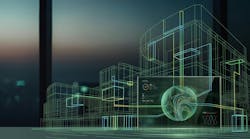Winning the Race to Revenue - Bridge Power Solutions for Data Centers
The data center industry is experiencing substantial growth, placing increasing pressure on the power grid to meet the rising demand. These facilities require continuous power with zero interruptions and highly reliable backup to minimize downtime. This expansion creates a gap between power demand and grid capacity, lasting months to years. Developers are exploring alternative solutions, known as bridge power, to mitigate these challenges. Reliable bridge power solutions are critical for expediting revenue and enhancing the resilience of mission-critical developments. While this recent whitepaper focuses on the U.S. region, many trends and applications have global relevance.
The paper discusses why bridge power solutions are becoming increasingly viable, considerations for developing a bridge power solution, selecting a provider and how to best mitigate risks.
What's Causing This Increase?
Several important factors drive the increasing power demand of data centers. Firstly, more data centers are being commissioned worldwide, reflecting a growing demand for data processing and storage. These data centers are not only becoming more numerous but also larger in size, with many now measured in terms of megawatts (MW).
The rapid advancement of technologies such as artificial intelligence (AI) and cloud computing further contributes to this surge in power consumption. According to a recent report published by the International Energy Agency (IEA), data centers consumed approximately 460 terawatt-hours (TWh) of electricity in 2022. This figure is projected to exceed 1,000 TWh by 2026, indicating a dramatic rise in energy usage as the demand for data processing continues to grow.
The Projected Growth of US Data Center Demand
As demonstrated in the graph above, U.S. data center energy consumption is expected to keep growing, meaning the capacity problem isn’t going away. To keep pace with the widespread adoption of AI technologies and the ongoing digitization of various sectors, data center power consumption could potentially triple by the end of the decade.
The Bottleneck
The supply chain for utility infrastructure development often faces multiple bottlenecks, with permitting being the most significant challenge. This lengthy process involves various government levels and regulatory agencies, taking anywhere from four years to a decade.
Areas that were previously targeted for data center development are rapidly reaching their power capacity limits. In a sector where availability, stability, and reliability are crucial, data centers face numerous power-related challenges. Assisting developers and operators in resolving these issues is essential for continued growth and expansion.
Winning the Race to Revenue with Bridge Power
Given the challenging position data centers face with utility delays and rising power demand, bridge to grid solutions are an excellent option. Essentially, bridge power fills the gap between when utility-supplied electricity becomes available, and the actual power needs of the business.
So, what is a bridge to grid solution? These solutions can vary greatly in complexity and installation time, consisting of turbines, natural gas generator sets, diesel generator sets, and Battery Energy Storage Systems (BESS). They can be set up in weeks and remain in place for days, weeks, months, or even years. This is ideal given some utilities’ 3-7 years’ wait times for connection.
Summary
As businesses encounter significant delays in securing grid power, they face critical challenges that are intensified by issues like crowded interconnection queues and the phased retirement of traditional power plants. The prolonged wait for grid power could mean businesses incur substantial costs if relocation is necessary.
To meet the surging power demand, companies are exploring alternative solutions like permanent self-generation, bridge power, and enhanced load flexibility. This underscores the need for technology-agnostic strategies and highlights the effectiveness of a holistic solutions approach. In an industry striving to expand data center capacity, adopting these innovative solutions could be crucial for long-term success and competitive advantage.
Read the full whitepaper here.
About the Author

Darryl Rider
Darryl Rider is a Senior Account Manager in the Energy Solutions team, part of Caterpillar's Energy and Transportation Division. He collaborates with data center customers and developers to create product-agnostic energy solutions that address the increasing energy demands in the data center sector across North America.
Caterpillar Electric Power delivers reliable, customized energy solutions for commercial, industrial, and utility applications worldwide. With over 100 years of expertise, it offers a full suite of products—from diesel and gas generator sets to microgrid technologies—backed by a global dealer network and industry-leading support.



